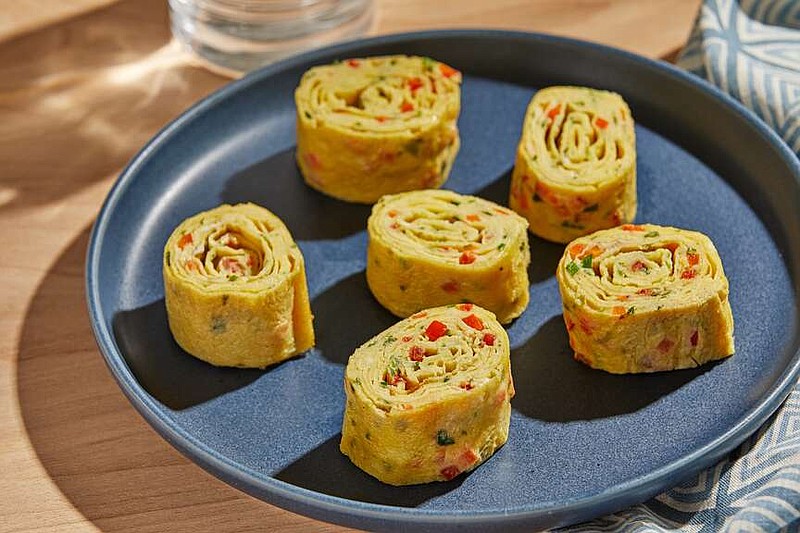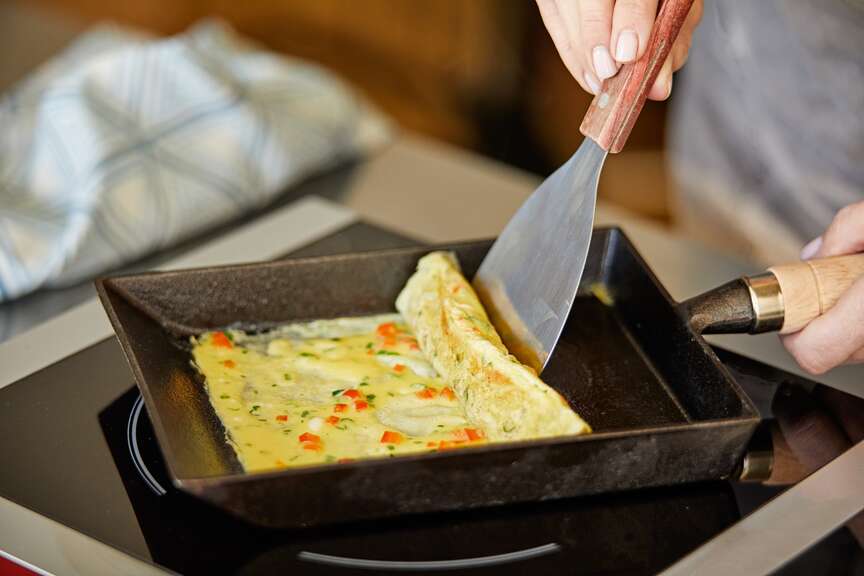From an early age, Monica Lee writes in her new cookbook, it was clear she possessed "sohn-mat," the Korean term for a natural instinct for cooking that translates to "flavor in the fingertips."
It's such an important part of her story -- she never saw (never mind used) a measuring cup or spoon even as she ran a Koreatown restaurant in Los Angeles for decades -- that it became the title of the book. "Sohn-mat" is the story of Lee's groundbreaking restaurant, Beverly Soon Tofu, which closed during the pandemic, and a guide to her intuitive style of Korean cooking (with measurements added).
The restaurant was pioneering in that it specialized in soon tofu chigae, a bubbling hot bowl of soft tofu stew, which Lee made to order. And over its decades of operation, Beverly Soon Tofu (named, like Monica herself, after an iconic L.A. place) introduced legions of diners to the dish and made them fans in the process.The book includes more than 40 pages of recipes and tips for soon tofu chigae in almost a dozen varieties. But it also goes deeper into other staples of the Korean table, such as kimchi and banchan, the latter the spread of small dishes that accompanies Korean meals. As much as I loved the soon tofu chigae that I tasted at her restaurant before the pandemic, it was one of the banchan recipes I couldn't wait to try.
I've long wanted to learn the right way to make a rolled omelet, called gyeran mari in Korean and tamagoyaki in Japanese. A popular side dish in both cuisines, it's often added to bento boxes, served on bowls of ramen or just presented among all the other delectable little plates alongside the main course or courses.
With its confetti of vegetables and distinctive shape, it's one of the most captivating ways to eat eggs I've seen, but I was daunted by the prospect of rolling the thin egg layer from one side of a pan to the other, pouring in another layer, and repeating, back and forth until the roll took shape. Would it hold together?
Turns out, I got the hang of it rather quickly. After jumping at the chance to order a special rectangular tamagoyaki pan (yes, I love my job), I followed the book's expert guidance -- finessed by co-author Tien Nguyen. It soon became clear that the most important instructions were to adjust the heat so that the egg mixture would be barely set on the bottom while still runny on top when I rolled each layer; that's what creates one homogenous piece (or close to it, anyway). I tried to channel Lee's philosophy, with which I absolutely agree, that being happy when you cook results in better food. My first attempt resulted in something not very pretty -- but still delicious. My second came awfully close to hitting the mark, and by the third time I had nailed it.
When I reported my experience to Lee and her daughters, the matriarch was charmingly generous with her smile and her praise: "You must have sohn-mat!"
Maybe. Just maybe I do.
Rolled Omelet
4 large eggs
2 tablespoons finely chopped green onions
2 tablespoons finely chopped red bell pepper
1 tablespoon finely chopped carrot
½ teaspoon granulated sugar (optional)
¼ teaspoon fine salt, plus more to taste
2 teaspoons vegetable oil
In a small bowl, beat the eggs with a fork (rather than a whisk, which would incorporate too much air). Add the onions, bell pepper, carrot, sugar (if using) and salt, and stir until the sugar and salt are dissolved.
In a rectangular Korean or Japanese omelet pan (called a tamagoyaki pan) or an 8-inch nonstick skillet over medium-low heat, heat the oil. Spoon just enough of the egg mixture to thinly cover the entire surface of the pan. (Lift and tilt the pan as needed to get the mixture to spread.)
Cook, undisturbed, until the eggs have just set on the bottom but are still runny on top, 1 to 2 minutes, adjusting the heat as needed. (If the eggs aren't set on the bottom, they won't roll, and if they aren't runny on top, they won't stick to the other layer of the omelet and create a solid mass like you want.) Use chopsticks or a wide spatula to start rolling the eggs into a log from one side of the pan to the other; if using a rectangular pan, go from one short side to the other short side.
Once the eggs are rolled to the other side, pour another thin layer of egg mixture into the pan, lifting up the rolled egg to allow some of the raw egg mixture to spread underneath it. (This helps create one continuous piece.) Again, once the eggs are just set on the bottom but still runny on top, use the chopsticks, the spatula and/or your fingers to roll the log back onto the new layer. Repeat the process with the remaining egg mixture.
When you have finished the final roll, remove the pan from the heat. Let the omelet cool in the pan for a few minutes, then transfer it to a cutting board. Cut the log into 1-inch slices and serve warm or at room temperature.
Makes 2 servings.
Adapted from "Sohn-mat: Recipes and Flavors of Korean Home Cooking" by Monica Lee and Tien Nguyen (Hardie Grant, 2023)


